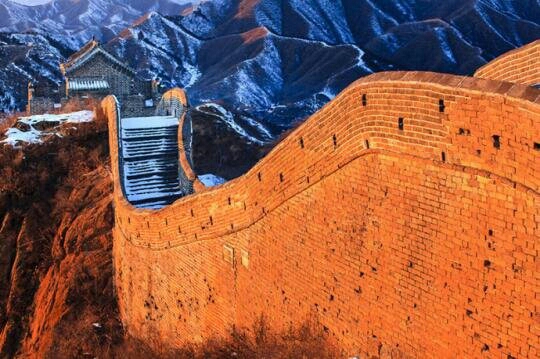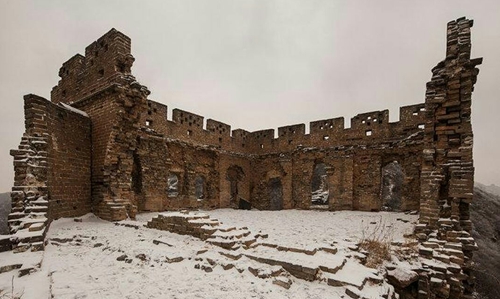Gubeikou Great Wall
Gubeikou section is the most complete part of the Great Wall since it had been built up. Located along the Yanshan Mountain range in the northeast of Miyun County, Gubeikou Great Wall welcomes people who are fond of adventures.
This section played a key role in the ancient battle policies. The geographical characters made Gubeikou section as a battle field for hundreds of years. To the west of the pass are the Chaohe River and the Wohu Mountain, and to the east is the Panlong Mountain. From ancient times, Gubeikou has served as a route of strategic importance, linking the southern and northern areas of the Yanshan Range. Set along the Yanshan Mountain range, Gubeikou Great Wall occupies a strategically important location which is difficult to access. As early as 2,500 years ago, a fortification was built here and was constantly reinforced throughout the following dynasties.
The first section of the wall was built during the Northern Qi Dynasty (550 - 557). Centuries later, General Xuda ordered to rebuild it in the early Ming Dynasty (1368 - 1644). The defensive capability of the wall was enhanced by adding more stones. When Qi Jiguang was appointed the chief commanding officer of Ji Garrison (one of the eleven garrisons in Ming Dynasty), he laid another line of brick wall beside the original one, thus forming the unique Gubeikou double-lined Wall.
Although the battle smell of Gubeikou Great Wall has been faded out, people also can find the marks in the history. With a length about 25 miles, Gubeikou Great Wall takes 14 beacon towers, 143 watch towers, 16 strategic pass, three citadels and many other military constructions. These cultural relics such as the Big Flower Beacon, Tower of the Northern Qi Dynasty and the dominant Wangjing Tower still tell the past stories to the world quietly.


